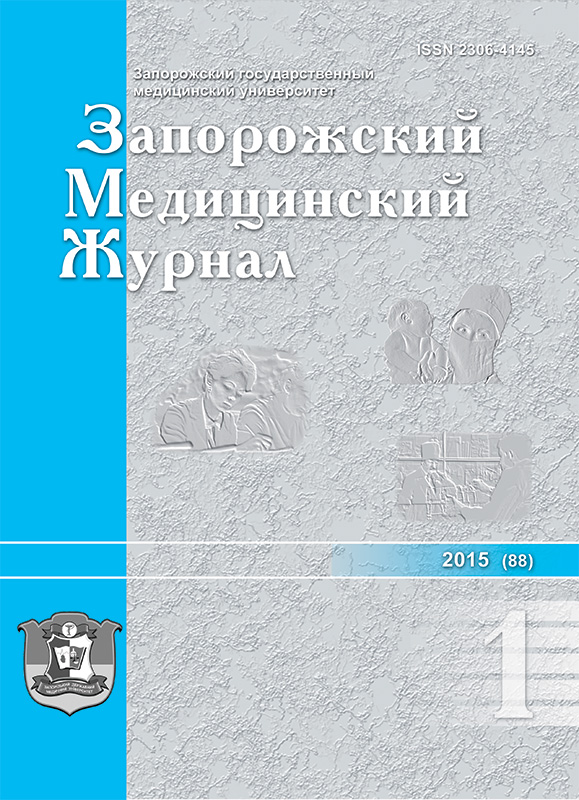Efferent detoxification methods and evaluation of the intensive therapy efficacy in children with bacterial toxemia
DOI:
https://doi.org/10.14739/2310-1210.2015.1.39723Keywords:
Рlasmapheresis, Pediatric Intensive Care Units, Bacterial Infections, Hemodynamics, ToxemiaAbstract
The main problem of severe bacterial infections intensive therapy in children is toxemia, disorder of hemodynamic and oxygen transport.
Aim. The aim of the work was to study the features of hemodynamics, oxygen transport, the level of toxemia during bacterial intoxication treatment in children, including discrete plasmapheresis.
Methods and results. The study included 28 children with severe bacterial infections. We found that the inclusion of efferent methods of intensive care, such as a discrete plasmapheresis, helped to reduce circulation hyperdynamia and restore a balanced mode of delivery and oxygen consumption within 24 hours after the plasmapheresis session.
Conclusion. Reduction of toxemia was noted after plasmapresis, which was confirmed by a significant decreasing in the toxicity markers level – middle molecules in the blood and leukocyte index of intoxication.
References
Voinov, V. A. (2010). E`fferentnaya Terapiya. Membrannyj plazmaferez [Efferent therapy. Membrane Plasmapheresis]. Moscow: Novosti. [in Russian].
Dubrov, V. P., & Herasimenko, P. V. (2003). E`kstrakorporal'naya detoksikaciya v lechenii torakal'noj gnojnosepticheskoj patologii [Extracorporeal detoxication in thoracic pyoseptic pathology treatment]. Ukrainskij pul'monologicheskij zhurnal, 4, 51–54. [in Ukrainian].
Kurochkin, M. Yu., Davydova, A. H., Gorodkova, Yu. V. (2009) Optimizaciya intensivnoj terapii tyazhelykh bakterial'nykh infekcij u detej v usloviyakh otdeleniya anesteziologii i intensivnoj terapii [Optimization of serious bacterial infections intensive therapy in children in Anesthesiology and Intensive Care Department]. Zaporozhskij medicinskij zhurnal, 4, 41–44. [in Ukrainian].
Kireev, S. S., Bagmut, T. A., Kurochkin, M. Yu., Kopylov, S. M. (patentee) (1996). Sposob prognosirovaniya iskhoda toksiko-septicheskikh zabolevanij u detej [Method of toxical septic diseases outcome in children]. Biuleten, 34.
Mlinnik, R. A., Voinov, O. V., Tezyaeva, S. A. (2011). Sochetannoe ispol'zovanie plazmafereza i infuzii gipohlorata natriya u bol'nykh s rasprostranennym peritonitom, oslozhnennym sindromom poliorgannoj nedostatochnosti [Combined use of plasmapheresis and sodium hypochlorate infusions in patients with generalized peritonitis complicated by multiple organ failure syndrome]. Klinicheskaya medicina, 4, 81–84. [in Russian].
Shifrin, G. A. (1989) Metodika sistemno-kolichestvennoj ocenki gomeostaza [Methodology of systemic quantifies homeostasis evaluation]. Medicinskaya gomeostatika v anesteziologii i reanimatologii Abstracts of Papers of the Scientific and Praktscal Conference, (pp. 133–138). Zaporozhye. [in Ukrainian].
Degoriciya, V., Sharma, M., Legac, A., Gradiser, M., Sefer, S., & Vucicević, Z. (2006). Survival analysis of 314 episodes of sepsis in medical intensive care unit in university hospital: impact of intensive care unit performance and antimicrobial therapy. Croatia Medical Journal, 47(3), 385–397.
Dellinger, R. P., Levy, M. M., Carlet, J. M. (2008). Surviving Sepsis Campaign: international guidelines for management of severe sepsis and septic shock. Crit. Care Med., 36, 1394–1396.
Downloads
How to Cite
Issue
Section
License
Authors who publish with this journal agree to the following terms:
Authors retain copyright and grant the journal right of first publication with the work simultaneously licensed under a Creative Commons Attribution License that allows others to share the work with an acknowledgement of the work's authorship and initial publication in this journal. 

